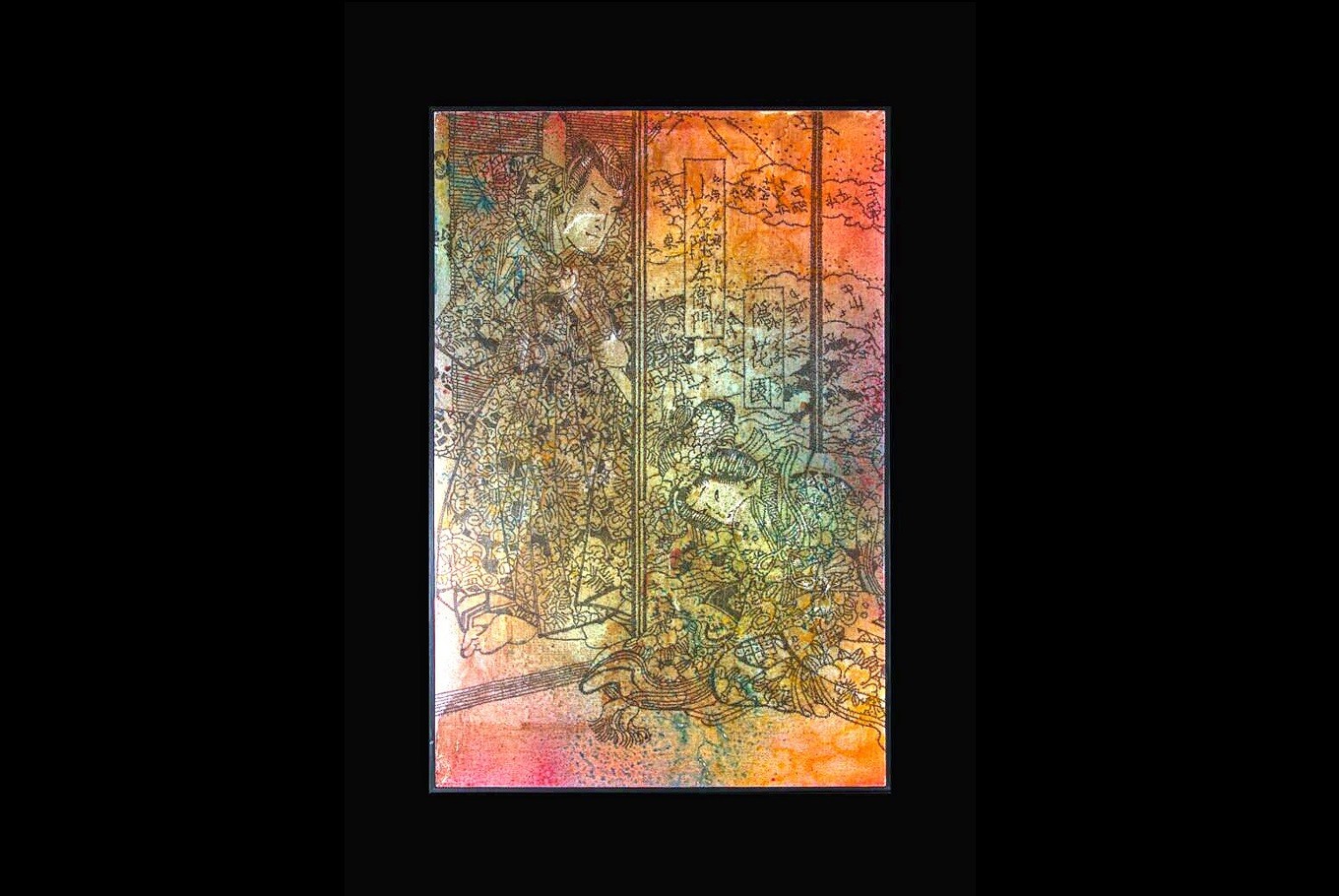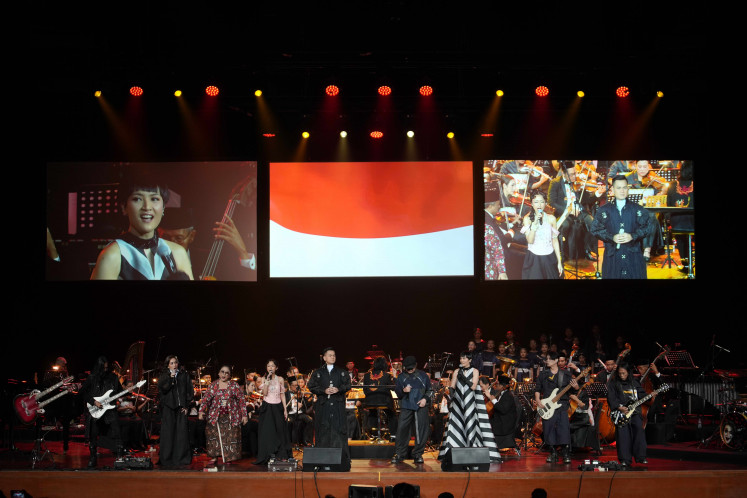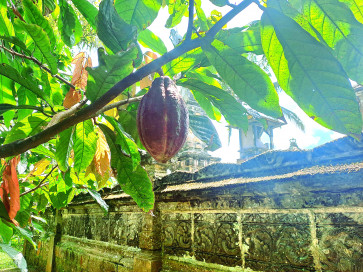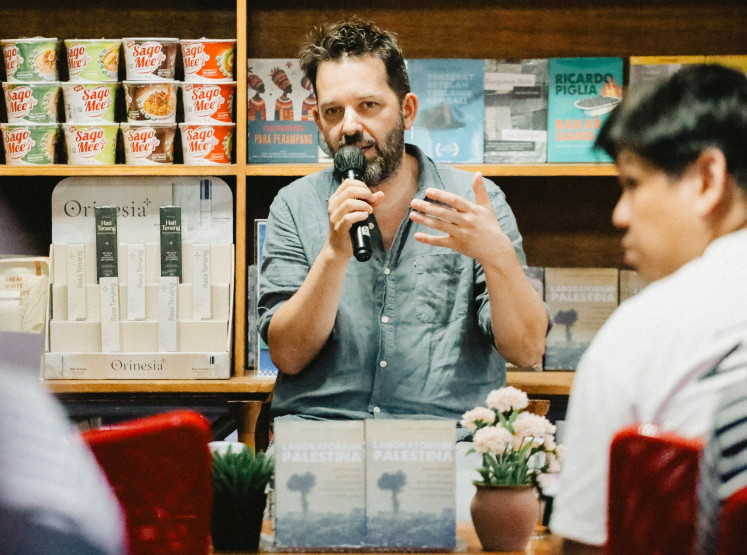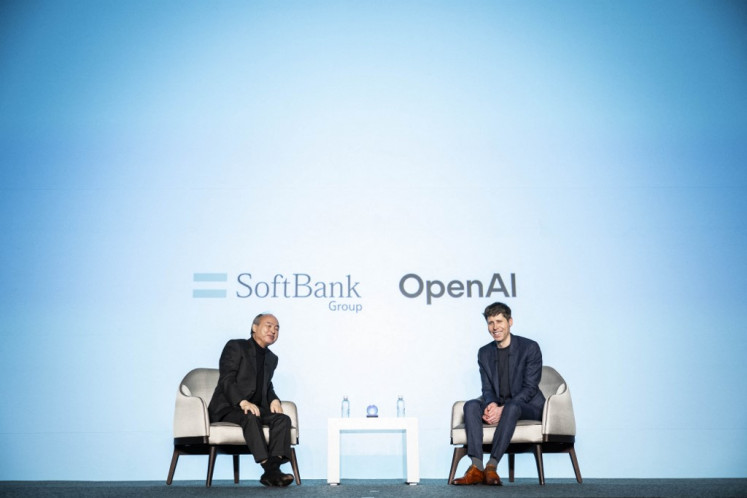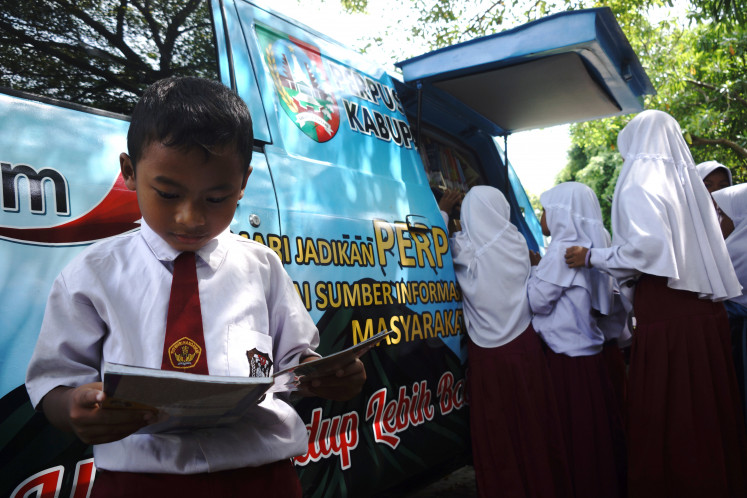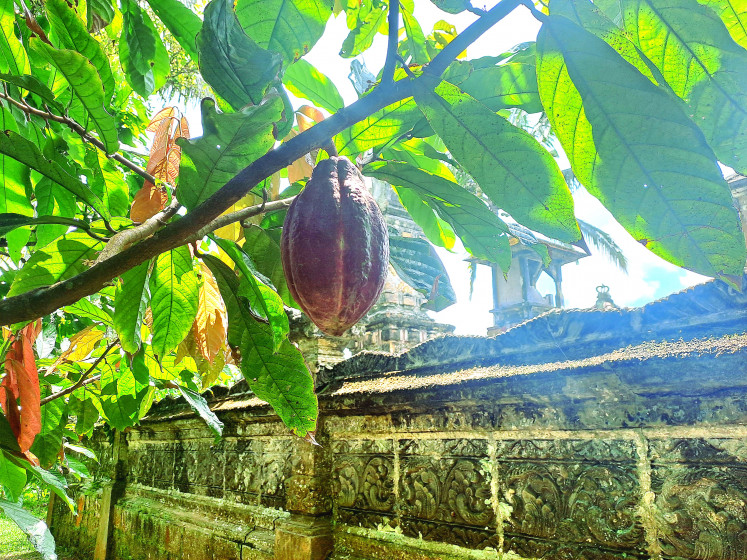Popular Reads
Top Results
Can't find what you're looking for?
View all search resultsPopular Reads
Top Results
Can't find what you're looking for?
View all search resultsHow Panji met Genji in Tokyo
Eddy Susanto is a history and literature freak — he found that the Panji story from his native Java has features similar to the Japanese Genji story, and considered it intriguing that both sagas narrate identical lives of pleasure, love, life and adventure.
Change text size
Gift Premium Articles
to Anyone
T
he phenomenon of the Javanese script on the canvases of Eddy Susanto has been a tool for unifying cultures from the farthest corners of the eastern and western hemispheres.
Such is again reinforced in his work for the Tokyo Art Fair, which was held from March 17-19. Infusing the Japanese story of Genji with that of the Javanese saga of Panji, Eddy Susanto fused the identical characters into one by using the narrative of Panji in Javanese script to shape the Genji figures on canvas. A history and literature freak, Eddy found that the Panji story from his native Java has features similar to the Japanese Genji story. Although he found it intriguing that both sagas narrate identical lives of pleasure, love, life and adventure, he insisted the tales go beyond love stories — they involve heroic incidents and elements of ethical value.
Panji was a legendary prince from East Java, the protagonist of the Panji cycle that developed from a relief found in Gembyok/ Kediri in East Java.
Lord Panji’s tales emerged at the end of the golden era of the Majapahit kingdom. It spread through oral storytelling, poetry and song, expanding to Bali, and on to the region encompassing Malaysia, Singapore, Thailand, Cambodia and Myanmar.
While it became a lingua franca in the Southeast Asian region, each country and culture added its own characteristic features.
Read also: Indonesian gamelan masters tour UK universities
Eddy visualized the flow in his fascinating work at the recent Singapore Biennale, where the Javanese letters changed to Thai, Cambodian and Vietnamese letters according to where the story was featured on the canvas. The Tale of Genji also narrates the story of a prince. He was the son of an ancient Japanese emperor and his beloved concubine. His mother died when he was three years old, and his father remarried with someone matching the beauty of his late wife. Genji in the story loved his stepmother, first as a mother and later as a lover.
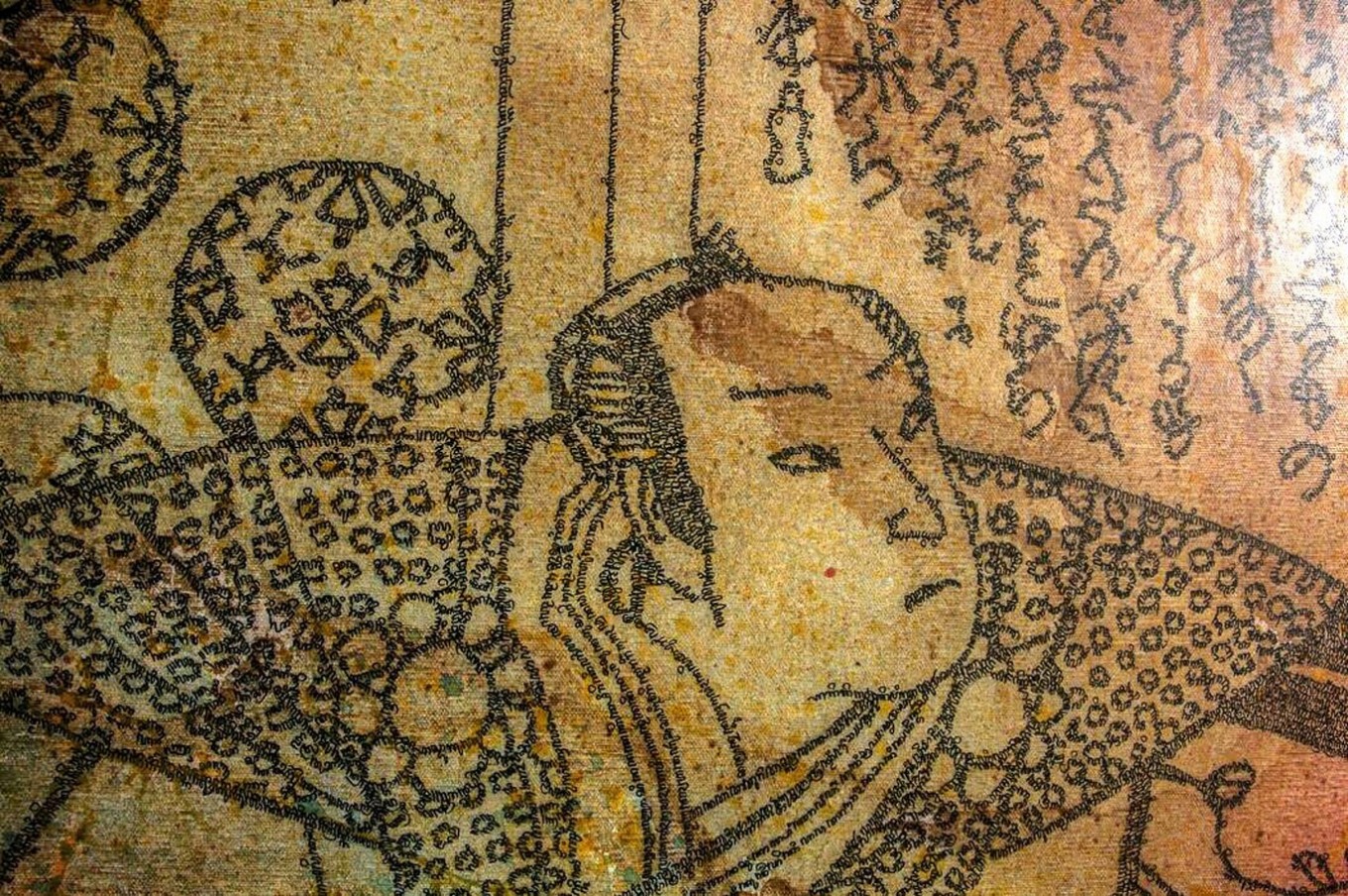 Up close: Details of Genji and Panji by Eddy Susanto.(Andonowati/File)
Up close: Details of Genji and Panji by Eddy Susanto.(Andonowati/File)
As the story is told, he had many romances. The tale was written by Murasaki Shikibu, who may have delivered the tale in installments, describing the customs of aristocratic society at the time, which was eagerly consumed by women of the aristocracy.
Critics have almost consistently described The Tale of Genji as the oldest, first and/or greatest novel in Japanese literature.
The Tale of Genji is set during the end of the ninth century until the early 10th century. Besides being recorded as the first novel in the world, The Tale of Genji is also known as the first romance novel of the genre.
Eddy revealed he had found old yellowed pages recounting the Genji story. Fascinated, he gave it new life by re-shaping the images with Javanese script along the contours, and adding adequate color.
The result is a work of subtle aesthetics and refined finishing.
Eddy’s obsession with the Javanese script stems from his love of reading. He discovered that it was the first tool of communication in the olden days, and artistically it is the most beautiful, he states.
Read also: The evolution of 'ogoh-ogoh'
Writing it gives one the chance to meditate while drawing the letters from arch to arch, he reveals.
His use of the Javanese script for his contemporary works first drew attention when he was among the awardees of the Bandung Contemporary Art Awards in 2011.
At that time he used Javanese script to form the images of Albrecht Duerer’s The Men’s Bath revealing the narrative of Babad Tanah Jawi (History of Java). This was inspired by his finding through research of the liberating spirit of the Renaissance in Europe and Islam in his native Java, which occurred in about the same period of time.
In the West, the spirit of the Renaissance swept away the conventional culture of memento mori with its focus on the soul and the afterlife, while the spirit of Islam blew fresh wind over the lives of ceremonies and religious rituals, bringing along a transformation into hard work and industrial foci.
Since then Eddy has created many works highlighting how cultural situations in Java correlate with those in other parts of the world occurring at about the same period of time. In so doing, he actually points out how art can play an important role in opening dialogue, or conversations that advocate cultural pluralism in a climate of nationalism.

